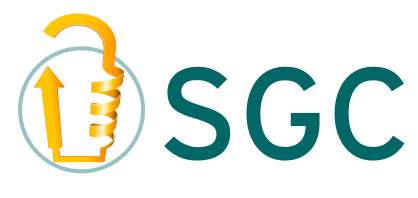 |
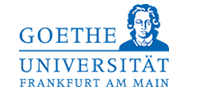 |
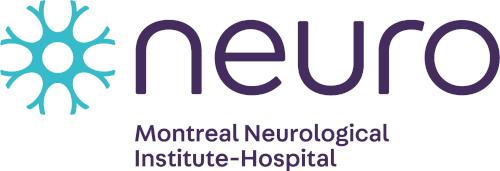 |
 |
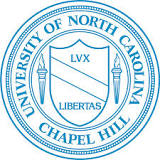 |
 |
SGC 20th Anniversary Symposium Europe RECAP

SGC 20th Anniversary Symposium Europe RECAP
from protein structures to probing biology
Twenty years have now passed since the inception of the Structural Genomics Consortium (SGC), marking a remarkable journey dedicated to advancing knowledge through open science and collaboration.
On Wednesday, September 6th, the SGC Karolinska hosted the 20th Anniversary Symposium Europe in Stockholm. This symposium served as a continuation of the celebration that began in Toronto earlier in March, commemorating past achievements and charting the course for what lies ahead.

The SGC's journey has been truly remarkable, evolving from its early days of identifying protein structures to its current mission of probing the complexities of biology through a collaborative open science approach. Our shared vision of unravelling the mysteries of the dark proteome has guided us through these transformative years, uniting minds from academia, industry, and research institutions worldwide. The symposium featured discussions by SGC initiators and members, showcasing their collective efforts and achievements, alongside presentations from newer collaborators and early career researchers highlighting ongoing projects.
What unfolded in Stockholm was more than a typical anniversary symposium; it resembled a family reunion. For one day, old friends and colleagues got back together sharing inside jokes. Old office roommates remembered their time together with laughing tears. SGC alumni shared unwritten stories of the first years of SGC and the young generation of scientists highlighted that although they were toddlers when SGC was founded, 20 years later they are here to share their vision for open-access drug discovery. With more than 100 attendees, this symposium was definitely a day that we will remember for a long time.
SGC – the first 20 years, chaired by Opher Gileadi

The first session commenced with Robert Cooke, SGC Alumnus, affectionately known as the "godfather of SGC," introduced by Opher Gileadi, chair of the session. Robert delved into the consortium's history, tracing it back to 2003 when structural genomics was in its infancy. During his presentation, he emphasized the pressing need at that time to establish a business case that extended beyond mere comprehension of protein functions, adhering to a pre-competitive model.
Subsequently, Stefan Knapp, from SGC Frankfurt who joined SGC in 2004, shared insights into his early work focused on discovering kinase structures later shifted to deciphering the intricate cascade of signaling pathways governed by kinases. He underscored the significant potential of kinases as drug targets and highlighted the incorporation of innovative technologies like NanoBRET to achieve this goal.

On a similar scale, Udo Oppermann, from the University of Oxford, discussed SGC's transition towards chemical probe projects, particularly within the ever-evolving realm of epigenetics, a field with profound implications for oncology. “SGC is giving chemical tools to biologists and enables chemical trials”, Udo said and touched upon the development of KDM6 demethylase inhibitor (GSK-J4), which he described as the second-best tool compound set originating from SGC for ex vivo studies, specifically among the epigenetic probes. This compound set served as a textbook example of the outcomes one can anticipate when intervening in pathways related to oncogenesis.
Liz Carpenter, an SGC Alumnus who joined SGC in 2009 and contributed to solving membrane protein structures commented “SGC was a fantastic experience to see what makes the world tick”. Among the 21 protein structures her team uncovered during her tenure at SGC, Liz elaborated on her work spanning various proteins and her transition towards discovering chemical probes and developing Target-Enabling Packages (TEPs). These tools hold immense potential for the industry's utilization, marking a significant contribution from SGC to the broader scientific community.
Routes to Target 2035, chaired by Anke Muller Fahrnow
The second session commenced with a poignant statement from Anke Muller Fahrnow, Chair of the SGC Board: "20 years of open science do make a difference!" Anke's words set the tone for the discussion that followed, as she underscored the profound impact of open science and highlighted SGC's pivotal role in nurturing collaborations and championing research reproducibility.

Paul Workman, from The Institute of Cancer Research, London, delved into SGC's significant contributions to the field of chemical probes. His presentation emphasized the critical importance of enhancing research robustness and instilling a heightened awareness among biologists regarding best practices in the selection and utilization of chemical probes. In closing, he reiterated, “We all have the responsibility to reach out to all scientific communities who misuse chemical probes, through our lectures, conferences, training. It’s important to start reaching out beyond the choir.”
Florian Montel and Oliver Krämer, from Boehringer Ingelheim, echoed the sentiment surrounding selective chemical probes and their transformative impact on scientific research. They focused their discussion on EubOPEN, a consortium dedicated to providing tools that unlock the intricacies of disease biology. They underlined the alignment of EUbOPEN's objectives with the launch phase of Target 2035.

Cheryl Arrowsmith, from SGC Toronto, presented the highly successful WDR project, emphasizing its significance. She remarked, "SGC was the pioneer in demonstrating the druggability of WDRs." Cheryl's team collaborated closely with industry partners and computational scientists to establish a test-bed for evaluating new technologies in preparation for Target 2035. She also stressed the urgent need for effective computational hit-finding methods, given the plethora of groups and companies claiming proficiency in drug discovery. To address this challenge, Cheryl talked about the creation of Critical Assessment of Computational Hit-Finding Experiments (CACHE), which seeks to establish a comprehensive framework for assessing prediction technologies while ensuring that all data and descriptions remain publicly accessible.
Mat Todd, from SGC UCL, emphasized SGC's track record of open science and collaboration. He drew attention to two significant projects: the Kinase Chemogenomic Set (KCGS), a collection of narrow-spectrum small molecule kinase inhibitors assembled by the SGC-UNC to explore the biology of dark kinases, and the Rapidly Emerging Antiviral Drug Development Initiative (READDI), a nonprofit biotechnology company dedicated to averting global viral catastrophes.
Target areas & technologies, chaired by Susanne Mueller Knapp

During the afternoon session, attendees had the opportunity to witness presentations by newer collaborators and early career researchers, shedding light on their ongoing projects. Nicola Burgess Brown, former SGC and now at Exact Sciences, passionately advocated for the sharing of methods and knowledge to expedite scientific progress. Following this, Matthias Gstaiger, from ETH, introduced the concept of proteotypes and unveiled the Affinity Proximity-MS framework tailored for the study of phosphorylation-dependent complex formation. He elucidated that this dataset serves as a valuable resource for modeling mode of action and cellular phenotypes.
Moving forward, Lizbé Koekemoer, from the University of Oxford, delved into SGC's pivotal contribution to the development of XChem at Diamond Light Source and Jesper Hansen, also from the University of Oxford elaborated on the endeavor to establish a comprehensive collection of enduring and meticulously characterized tools and data packages. These resources are instrumental in facilitating research related to the modulation of Na/H transporters.

Martin Schwalm, representing the trainees in SGC Frankfurt, shared valuable insights into optimizing Protacs and underscored the critical importance of evaluating cellular residence time. Concurrently, Susanne Gräslund, affiliated with Affibody, offered an overview of her work conducted across three SGC sites, where she has been diligently involved in producing well-characterized antibodies essential for multiple SGC projects.
Translational Disease Models, chaired by Michael Sundström
The final session commenced with Aled Edward, CEO of SGC, setting the stage by emphasizing the imperative to extend our efforts beyond structural work. SGC's journey, which began with the delivery of protein structures, has evolved to make a profound impact on the discovery of chemical compounds and the testing of innovative technologies, expediting early-stage drug discovery. Looking ahead, Aled outlined a vision for a successful future, one grounded in selecting methods that leverage purified proteins and structural capabilities. He stressed the importance of prioritizing approaches that yield experimental hits for immediate progress while also providing data to fuel computational methods. Moreover, Aled advocated for running pilot projects to assess success rates. In his own words, "Pharma will compete to make the best medicines, not the first medicines. We can help this endeavor by finding the genes and their tools."

Next, Volker Lauschke, from Karolinska Institutet, talked about human tissue engineering combined with integrative omics analysis, particularly in the context of Nonalcoholic steatohepatitis (NASH). He revealed how the evaluation of the SGC Donated Chemical Probe (DCP) set revealed ten new potential targets for steatosis and fibrosis. Following this, Maja Jagodic, also from Karolinska Institutet, shifted the focus to epigenetic marks and their pivotal role in multiple sclerosis. This segued seamlessly into Zhuoyao Chen's presentation from the University of Oxford, wherein she shed light on the meticulous probing of the neomorphic roles of BTB-Kelch E3 ligases in cancer.
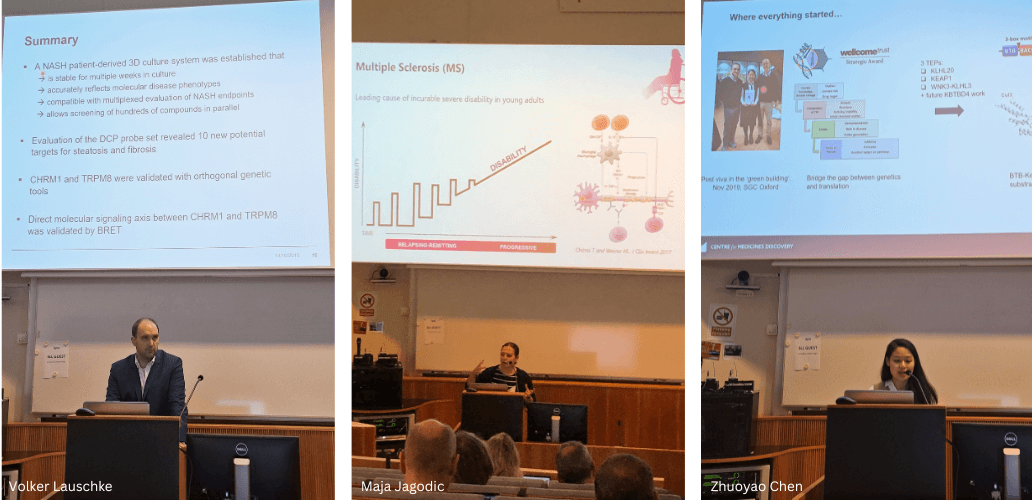
The meeting showcased SGC's dedication to open science, collaboration, and its diverse contributions spanning various research domains over the past two decades. It was a source of pride to witness long-standing SGC scientists alongside the emerging generation of talented researchers, all passionately presenting their work and advocating for open science and early drug discovery.
Anticipation looms for what the future holds in the coming decade. As we embark on this journey, we extend our heartfelt gratitude to the diligent organizing committee and volunteers who worked behind the scenes to make this event a success.
For more insights into SGC's work and ongoing initiatives, we invite you to explore our website and connect with us on social media platforms such as LinkedIn and Twitter. Stay tuned for what lies ahead for SGC!
